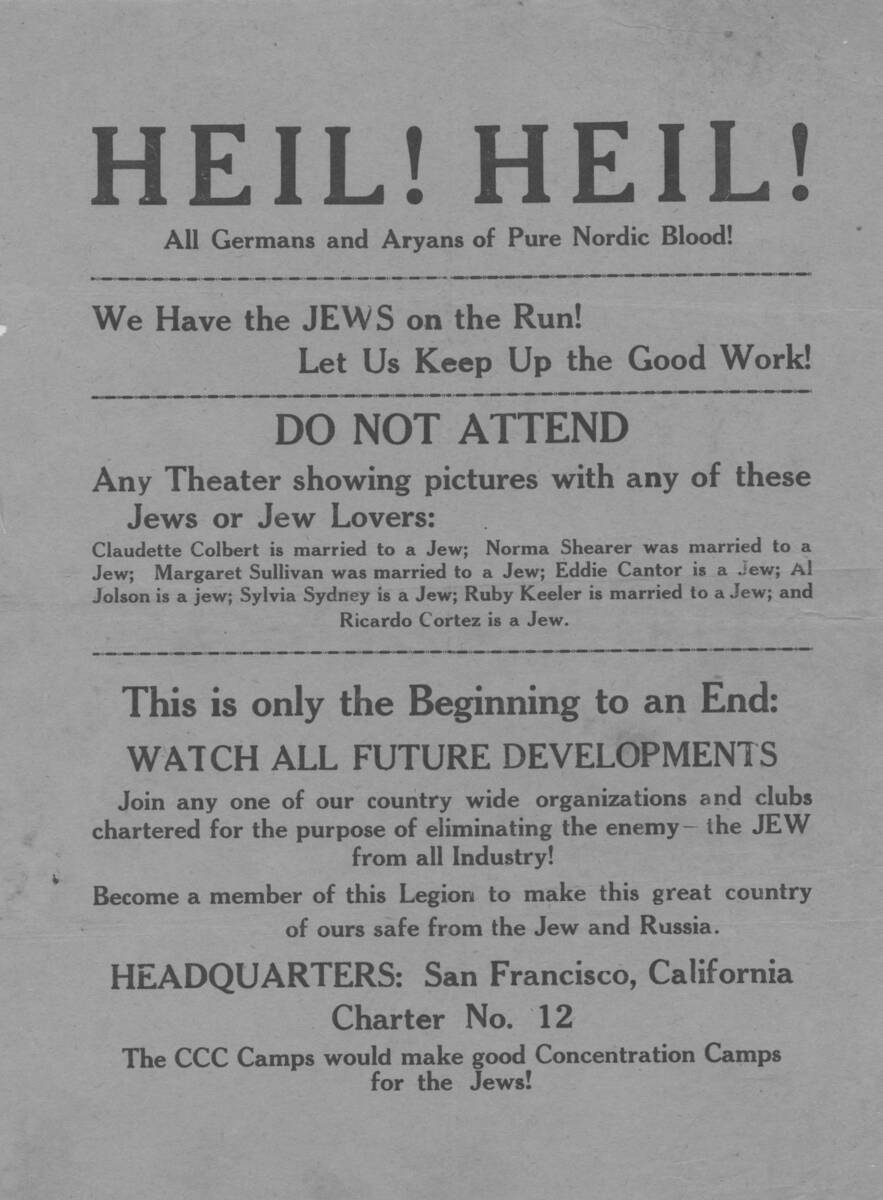Source

Source: Flier, c. 1936. Flier, Jewish Federation Council of Greater Los Angeles, Community Relations Committee Collection, Courtesy of CSUN Oviatt Library.
Many high-ranking Nazis scorned the United States for its “melting pot” ideal and for its supposed status as a “mongrelized society” where racial mixture was common. However, Hitler and other leading Nazis had also taken inspiration from American anti-miscegenation laws and the deep-seated antisemitism among conservative groups. In fact, even the architects of the Nuremberg Laws argued that the “one drop rule” to define African Americans was too harsh. Over the course of the 1930s, the Nazi regime was intrigued by home-grown fascist groups in the U. S., such the German-American Bund, the Silver Legion of America, and the Ku Klux Klan, though the actual connections of these groups to Germany were tenuous. Nazis discussed and publicized Americans’ use of quotas that ensured Jews could not occupy a majority in any institution, club, or university. This poster is an example of the deeply rooted antisemitism that persisted in the United States. It is aimed at Jews in Hollywood, which both American and German antisemites frequently cited as an example of a supposedly Jewish controlled industry. In this case, Jews are described as corrupt and the creators of lowbrow films for the masses. It calls for the boycott of all films and actors that are Jewish or associated with people with Jewish backgrounds.

Source: Flier, c. 1936. Flier, Jewish Federation Council of Greater Los Angeles, Community Relations Committee Collection, Courtesy of CSUN Oviatt Library.